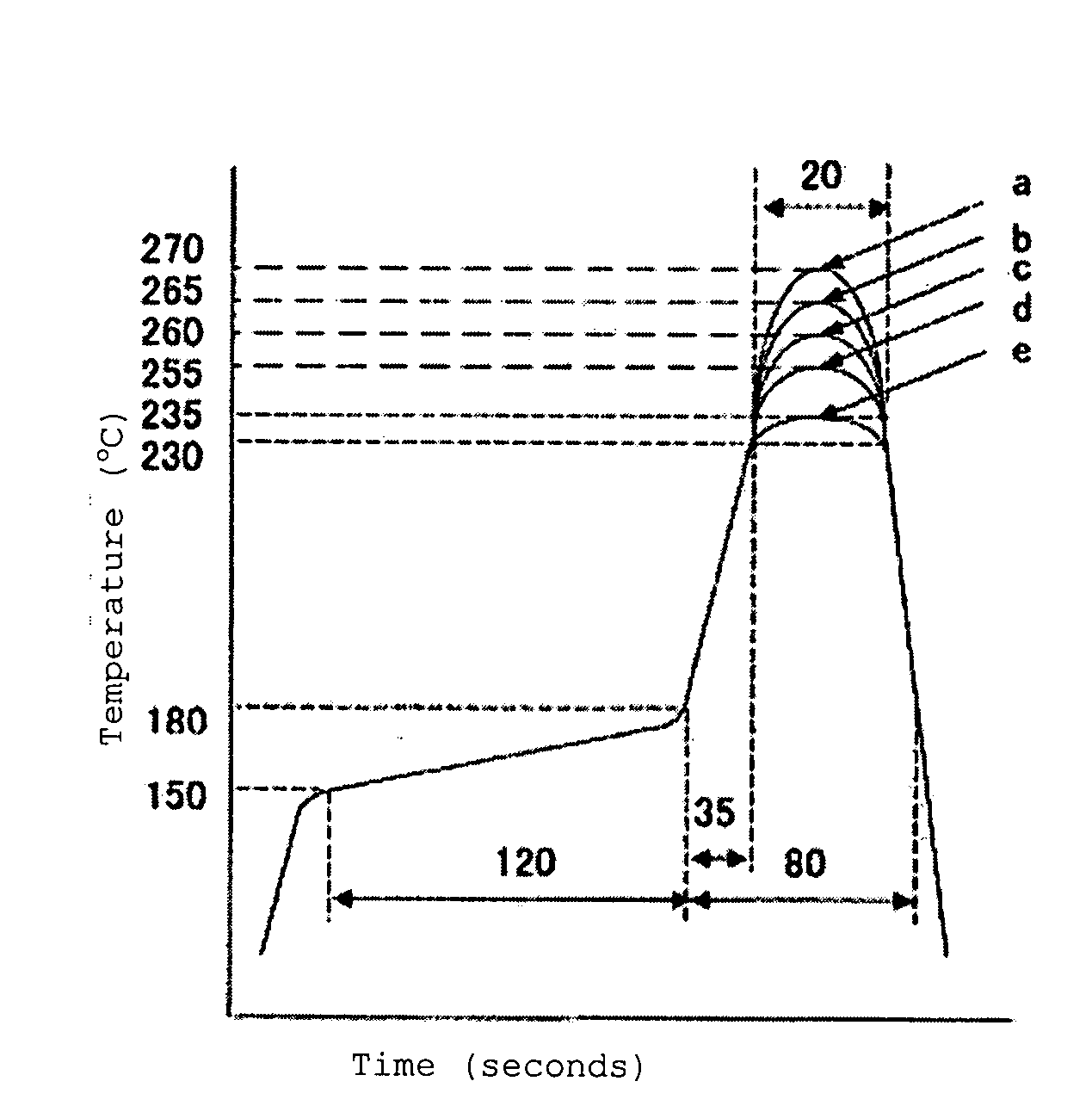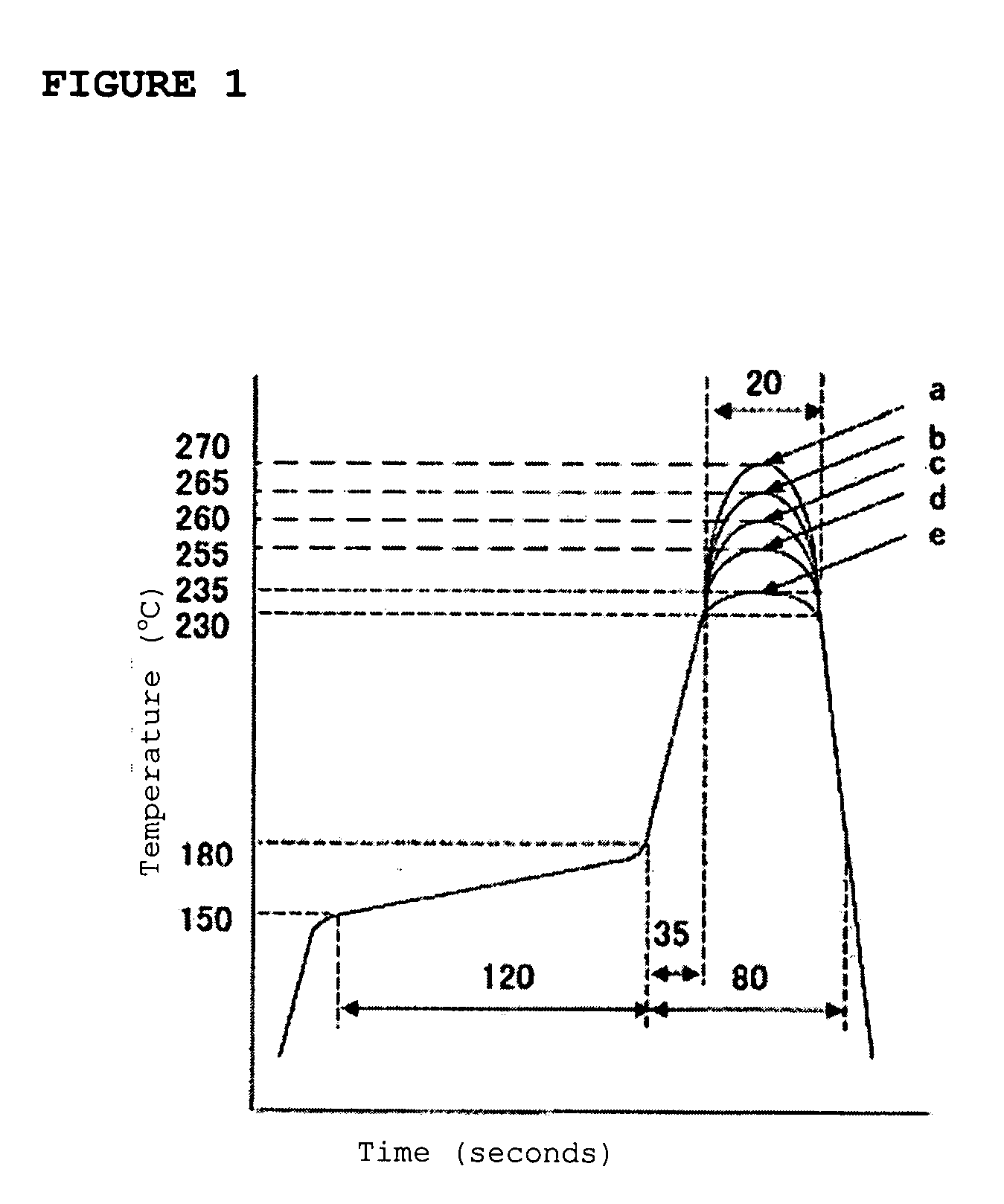Flame-retardant polyamide composition
a polyamide and flame-retardant technology, applied in the field of flame-retardant polyamide composition, can solve the problems of high water absorption, lack of heat resistance of polyamide, and increase the mounting temperature by 10 to 20°, and achieve excellent heat resistance, high industrial value, and good heat stability during molding
- Summary
- Abstract
- Description
- Claims
- Application Information
AI Technical Summary
Benefits of technology
Problems solved by technology
Method used
Image
Examples
examples
[0080]In the following, the present invention is explained more specifically by Examples, but the present invention is not restricted to these Examples. In Examples and Comparative Examples, measurement and evaluation of each of properties were performed according to the following methods.
[Intrinsic Viscosity [η]]
[0081]In accordance with JIS K6810-1977, 0.5 g of a polyamide resin was dissolved in 50 ml of 96.5% sulfuric acid, and then the falling time of the sample solution at 25±0.05° C. was measured by using an Ubbellohde viscometer. Intrinsic viscosity was calculated by the following equation.
[η]=ηSP / [C(1+0.205ηSP)],ηSP=(t−t0) / t0
[η]: intrinsic viscosity (dl / g), ηSP: specific viscosity, C: sample concentration (g / dl), t: falling time (second) of sample solution, t0: falling time (second) of blank sulfuric acid.
[Melting Point (TM)]
[0082]By using DSC7 manufactured by PerkinElmer Inc., a sample was once kept at 330° C. for 5 minutes, cooled to 23° C. at the cooling rate of 10° C. / min...
examples 9 to 13
[0119]The above-mentioned each component was mixed in the ratio shown in Table 4, and the mixture was charged into a twin-screw extruder equipped with a vent set at 320° C. to obtain a composition in pellets by melt-kneading. Properties of the obtained flame-retardant polyamide composition are shown in Table 4.
TABLE 4ExamplesUnit910111213PolyamideKinds—A-1A-1A-1A-2A-3resin (A)Amount% by mass47.447.547.247.447.4Intrinsicdl / g0.80.80.81.00.8viscosity [η]FlameKinds—B-1B-1B-1B-1B-1retardant (B)Amount% by mass18.018.018.018.018.0FlameKinds—C-1C-1C-1C-1C-1retardantAmount% by mass2.02.02.02.02.0auxiliaryagent (C)ReinforcingAmount% by mass30.030.030.030.030.0material (D)HydrotalciteKinds—E-1E-1E-1E-1E-1compound (E)Amount% by mass0.20.10.40.20.2FlammabilityUL 94 rating—V-0V-0V-0V-0V-0testTotal time ofSeconds343155flaming combustionFlexural testStrengthMPa285286283260271Distortion distancemm4.04.03.93.84.0Flexural modulusMPa1270012700127001240012000ToughnessmJ6363625762Reflow heat resistance t...
PUM
| Property | Measurement | Unit |
|---|---|---|
| melting point | aaaaa | aaaaa |
| melting point | aaaaa | aaaaa |
| melting point | aaaaa | aaaaa |
Abstract
Description
Claims
Application Information
 Login to View More
Login to View More - R&D
- Intellectual Property
- Life Sciences
- Materials
- Tech Scout
- Unparalleled Data Quality
- Higher Quality Content
- 60% Fewer Hallucinations
Browse by: Latest US Patents, China's latest patents, Technical Efficacy Thesaurus, Application Domain, Technology Topic, Popular Technical Reports.
© 2025 PatSnap. All rights reserved.Legal|Privacy policy|Modern Slavery Act Transparency Statement|Sitemap|About US| Contact US: help@patsnap.com


